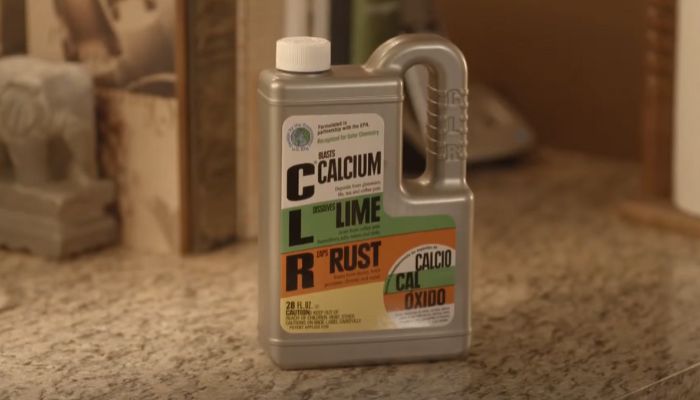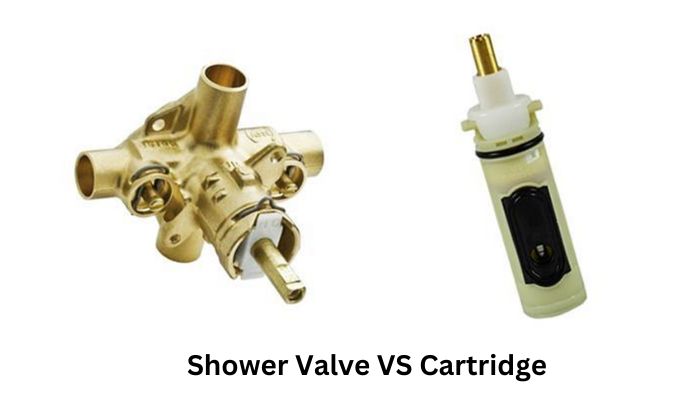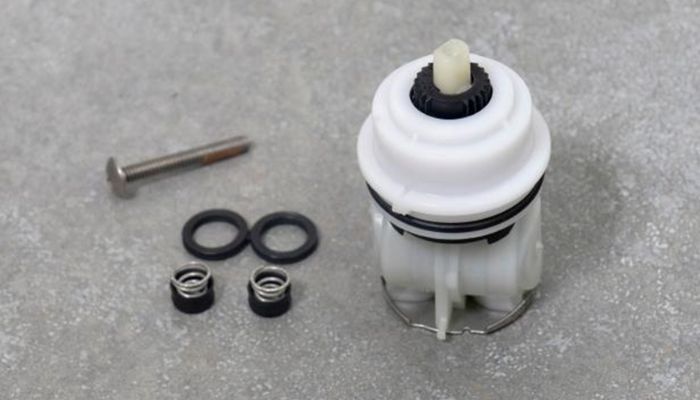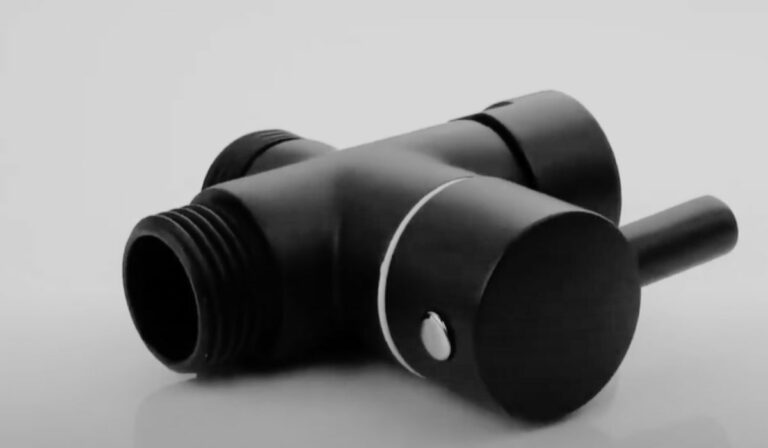Single Handle Shower Faucet Is Hard to Turn Off [Solved]
In a single-handle shower faucet, the whole operation depends on one handle. So quite clearly, when it goes bad, things turn frustrating. Especially when a single handle shower faucet is hard to turn off and you don’t know what’s wrong all of a sudden.
To fix a single-handle shower faucet that is hard to turn off, you may require cleaning the internal parts. Or it can get a little tricker with cartridge repair, replacing shower valves/gaskets/grommets, changing washers, and even handle replacement.
Let’s go through some potential problem creators and the corresponding solutions in this guide today!
Troubleshooting a Single Handle Shower Faucet that Is Hard to Turn
The handle of a shower faucet can indeed be affected by many factors. And some of these can require the involvement of a professional plumber.
However, at first, I would suggest you try simple troubleshooting yourself. It’s feasible, especially for those who are used to fixing things in their houses.
So exactly how do you fix a shower faucet handle that is hard to turn? You can try one of these two troubleshooting solutions initially and expect an improvement.
- Clean the faucet components.
- Replace the cartridge.
Cleaning a Single Handle Shower Faucet that Is Hard to Turn
It is quite likely that the reason behind your single-handle shower faucet becoming stiff and squeaking is mineral deposit accumulation. This can create resistance and fruition. Using a suitable cleaner, you can try cleaning the components of the faucet. And this may solve the issue.
Also, You Should Consider Cleaning the Internal Parts of the Single-Handle Faucet If:
To Fix a Dirty Single Handle Shower Faucet that Is Hard to Turn Try the Following Steps:

Replacing the Cartridge of a Single Handle Shower Faucet that Is Hard to Turn
If the cartridge is damaged, then your shower won’t turn off. It is a significant part of a single-handle shower faucet in charge of controlling the flow of water. So as soon as you discover something wrong with the cartridge, take it seriously.
Along with the stiff handle, a few more things can take place with the single-handle shower faucet when the cartridge goes bad.
If you have been dealing with dripping or running water even when the shower was turned off, it’s a big sign. Also, a slipping handle can be a result of a damaged cartridge.
The Cartridge of a Single Handle Shower Faucet Can:
In the case of the last scenario, you simply need to install it again and make sure the orientation of its placement is right.
It is also possible to clean and lubricate the old cartridge if the build-up is causing a malfunction. Your choice of cleaner and lubricant must comply with what the manufacturer has recommended.
For example, if you are dealing with a Moen shower handle that won’t come off and it requires lubricating the cartridge to solve the issue, you cannot opt for a plumber’s grade faucet grease.
Using a lubricant that has petroleum may react with rubber seals and worsen the overall operation of the handle.
So, make sure you check the cautions provided by the manufacturer. And, if accessible I would suggest a replacement in this case as well.

And finally, with damaged seals, you need to think about a new cartridge. In this case, you also need to identify the cartridge number to buy the right one for your single-handle shower faucet model.
To replace the cartridge, don’t skip checking the specific guidelines provided in the manufacturer’s instructions. I have already given a general method for the cartridge replacement while discussing a malfunctioning single-handle shower faucet with no hot water.
Why Is My Single Handle Shower Faucet Hard to Turn off All the Way?
It’s one thing to discover that the shower knob is not turning off, but it’s another to deal with a shower faucet handle that turns off the water but not completely.
As a result, you get dripping water from the shower head all the time. You may have already tried to use your strength to the maximum for closing the handle all the way, but the water drops keep coming out and leave you wondering, “Exactly why won’t my shower handle fully turn off?”
Well, it depends but most of the time this one part is responsible.
Your shower handle won’t fully turn off if the valve has gone bad. A malfunctioning shower valve with damaged internal components can cause persistent water flow and that can result in difficulty with closing the handle fully.
Now some people confuse a shower valve with a cartridge. But these are two different components of a shower system.

A shower valve is a must-have component for controlling water pressure and temperature. While a cartridge is a part of the shower valve, it might not be available in some shower systems.
The hot and cold water coming from different sources are mixed inside the shower valve and then the water flow direction is decided. While the cartridge works with the handle to regulate turning the water flow on or off.
To Check and Fix the Shower Valve, Follow the Given Steps:
Tools You’ll Need: A rubber strap wrench, masking tape screwdriver/Allen wrench, new valve, new gaskets, and new grommets.

Disconnect Water Supply
Turn the main valve of the shower off to disconnect any water supply. Detach the trim pieces from the faucet.
Remove Handle and Outer Plate
Now the removal process for the handle can be different depending on the faucet manufacturer. In some cases, you need to use a small flathead screwdriver for prying off the handle.
Or go beneath the knob to find a small Allen bolt and unscrew it. Detach the outer plate using a Phillips head screwdriver.
Remove Valve Collar
Detach the valve collar by carefully pulling it with your hand. You don’t want to hurt the rubber gasket that should be available beneath.
Tips: Rolling the gasket to the back can help in removing the collar without harming the gaskets. Remember to roll it back during reassembly.
Remove Valve and Seals
Using a soft rubber strap wrench, unscrew the large brass bushing that is holding the valve in place. You want to gradually unscrew as this will allow any leftover water pressure to seep out. Also, unscrewing the whole busing at once can cause the springs to fly out.
Now remove the valve and seals and observe the valve body to identify both hot and cold water holes. To mark down the sides you can use the masking tape. Each hole will have an outer gasket and grommets that you need to remove as well.
Replace Gaskets and Grommets
If the valve is still in good condition, you simply need to replace the gaskets and grommets. However, I would still suggest you place a new valve to make the fix more dependable.
Reassemble and Finish
Once you have installed the new valve, gaskets, and grommets, it’s time to reassemble. Don’t forget to check the orientation of the HOT and COLD sides. Place the springs into the valve body, tighten the bushing, and check the gasket seatings.
Finally, install the trim pieces to the faucet and install the handle back to its place. You should be able to turn off the faucet handle fully without any drips of water.
Other Possible Culprits of a Hard to Turn Single Handle Shower Faucet
So, if grime buildup, cartridge failure, or problem with the shower valve are not the cause, why is my shower faucet difficult to turn off? Unfortunately, there are no specific parts that you can confirm to be responsible for a problem like this.
A shower faucet can be difficult to turn off for several plumbing malfunctions. It can happen from damaged cartridges, faulty shower valves, build-up inside handle mechanisms, loose handle screws, broken faucet bodies, clogged areas, leakages, and more.
There may be more than one factor causing the problem. Below are some more common issues and their potential solution to this issue that you can check.
Inappropriate Installation
If a new shower handle is hard to turn, then perhaps this is it! Often due to installing a new faucet or a new handle improperly the mechanism of certain parts (in this case the handle) is not correct.
Make sure you check the washer is fitted incorrectly. There should not be any gap between the shower faucet and the wall.
Broken Parts
Try to remember the last time you took a good look at the handles and all other parts of your shower faucet.
If it was quite a long time ago or you cannot actually recall it, then discovering a malfunction with the handle is given. Damaged parts can exist within the faucet.
With usage, the rubber seals inside the faucet will become weaker and crack. The same goes for the washers. This often leads to leaks and can make turning off the handle difficult.
Worn-out washers are unable to create a tight seal. So, if you figure out that the shower is turned off, but the water is still running, damaged washers could be the reason. You will find these under the handles.
Also, the most delicate part of a shower faucet handle is its shaft. This part can be damaged over time. In fact, it is one of the most common components to break easily.
Sometimes the breakage happens from regular wear and tear. But it can also take place due to stiff cartridges as that requires additional force to operate.
You should also consider looking for damage and cracks in the shower faucet handle. A partially broken shower handle can also be the cause of its stiffness. Repairing a broken shower handle often means replacing it with a new one.
Loose-Fitting Connections
Having loose connections anywhere in the shower faucet will also cost a stiff and hard-to-move handle over time.
Water dripping out of the handle due to the loose fitting connections can contribute to making a handle unable to turn off fully. You may need to tighten these loose points or consider hiring a professional to accurately find out all the slack spots.
Blocked Aerator
Blending air and water to give the feel of bigger water droplets and enjoying more water than it actually is. That’s basically the amazing effectiveness of aerated shower heads.
However, with constant usage sediments will build up on the aerator. This can cause a clog in the aerator, which eventually can hamper other performances of the shower faucet.
Yes, including the occurrence of slow drip from the handle and making it difficult to turn off all the way. Consider cleaning the aerator and clearing all the clogs within it regularly to avoid this issue.
Wrapping Up
And there you have some idea on dealing with a single handle shower faucet that’s hard to turn off. Before calling a professional, try the simple troubleshooting and see if it’s fixable yourself. These solutions are pretty straightforward, so I am hoping you won’t have trouble trying them.
However, keep in mind that depending on the severity of these issues, you may need to consider further checking and in fact, a professional to inspect and address them better.
Also, take this as a sign to establish some maintenance regime for all the fixtures at your home. I will see you soon in my next guide, bye!

